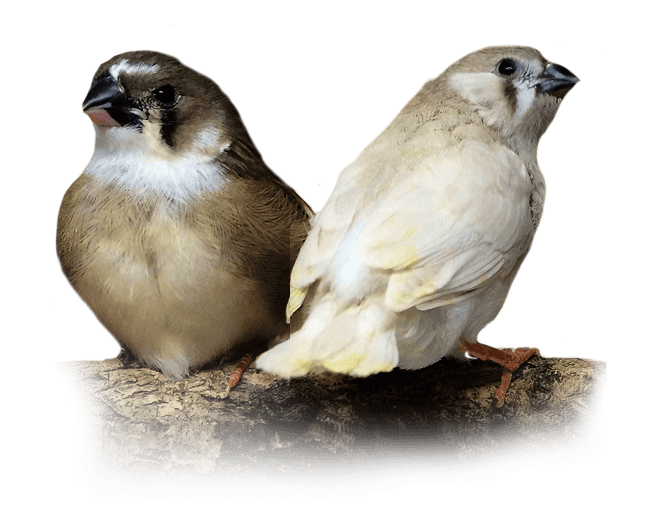Tetrachromacy is essential to a bird’s ability to find a mate and to procreate

Many references are made towards the positive, and indeed life-giving, properties of the wavelengths of light known as UVB.
We know that most living things including our own species use the power of the sun to obtain warmth and can also use UVB to start and to maintain the D3-cycle.
This is the term used to describe the body’s ability to manufacture and utilise Vitamin D3, which of course among many other uses is the catalyst to calcium absorption, storage and use.
This is one of the miracles of wild development and runs true with the theory, “nature will seek out, change and adapt to and make use of the earth’s free resources.” In my mind there is no bigger source of free energy than the sun itself. But what about the other group of wavelengths that we refer to as UVA? What is it and how is it thought to impact the avian eye?

The wavelengths of light described as UVA are the wavelengths between 315- 400nm. This is in the blue end of the spectrum and outside the visual capabilities of humans. We have three types of cone shaped cells that allow us to see around one million colours. Birds and reptiles among certain other animal groups are known as being tetrachromatic.
This word describes the four types of cone-shaped cell in the eye that allow the species to view the world in an amazing and indeed spectacular way. It is true to say that humans will always struggle to understand this “gift” of sight – we seem to struggle to believe the things that we cannot see.
It is thought that a bird can see and use around 100 million colours including those in the UV-spectrum. Birds and reptiles have not just developed to see a very pretty world but they have developed to make full use of this visual ability, as a core part of avian and reptilian communication and for obtaining sustenance. Tetrachromacy is a powerful tool to a wild bird.
Plants communicate too!
It seems that some plants and fruits have also developed a form of communication that allows the effective spread of seeds through a relationship with the locality’s tetrachromats. In much the same way as bees are guided towards a pollen laden flower through fluorescent markers that are only visible to those species that can utilise the UV- wavelengths, plants can display their fruits to birds even in the thickest foliage.
It has been shown that some fruiting plants allow a chemical change in the outer surface of the fruit it has produced, that almost fluoresces, and as such makes it easy for a bird to spot. It is thought that this also acts as a guide to a bird showing which fruits are ripe and which ones have not yet reached their optimal nutritional levels.
The green iguana uses the same skills to locate plant matter in dense jungle. We must accept the relationship between birds and reptiles and understand them both as a group. They really are very closely related.
It is also thought that those plants with toxic content will use these fluorescent markers to warn off predators. Insects also seem to display these UV-activated markers. This can help insect-eating birds, as the markers make edible insects easy to find on the wing and again can be used to warn off predators through displaying toxicity warnings.
The more we look at tetrachromats and the food chain the more that is uncovered. This is a subject that simply blows my mind! UVA activated vision is a key and critical part of a wild bird’s food finding tool kit. Without the ability to select the right foods, in the right location, it is possible that birds would expend more energy than they could receive through ad hoc ingestion, through wasted flight. This again defies the laws of evolution and wild development.
Iridescent marking
It also seems birds are able to detect fluorescent markers in and upon one another’s feathers. Again these markers are largely invisible to us as humans, but we can see the sheen on a pigeon or starling if they are caught in the right light. This is but a fraction of the iridescence that birds themselves can see (if exposed to the right level of UVA). It is my belief that birds use these markers to denote age, breeding readiness and health.
I am convinced that iridescent markers are used in active communication. We can look at the practice of preening and the active wiping of gland secretions on the feathers. The greater hornbill for example seems to “paint” itself with these secretions that we know to fluoresce under exposure to UVA and can also be ingested as a reactive source of vitamin D3 – amazing!
Macaws preen in much the same way and as we all know can blush. As with all nature, everything is done for a reason. There is a reason and an outcome for every action and reaction. For me the evidence towards positive and proactive communication through this method of iridescent marking simply makes sense.
There are so many species of birds that are totally monomorphic. At a visual level and as keepers we have no firm clue of the bird’s sex, whether it be African Greys, Senegal or Meyer’s Parrots, cockatoos, macaws or Amazons. This seems to defy the laws of wild survival and continued development. Birds simply must have a way of displaying the sex that they are to each other. If this were not the case they simply would not be able to meet up and reproduce in the numbers required to sustain a species through the millennia.
Tetrachromacy is therefore essential to a bird’s ability to find a mate and to procreate. If we provide a pair of birds with access to the right quantity of light, at the right wavelengths, they will be able to see the sex of the inhabitants and should settle down to nest very quickly.
It is also thought that birds with no access to the correct quantity of UVA are prone to squabbling amongst themselves. Birds will always seek to communicate and carry out the evolved practice of maintaining a social hierarchy. If a bird is trying to communicate, but cannot project its message accurately and the other birds in the enclosure cannot visualise the messages properly, a “mixed message” situation may arrive. This, I believe, can lead to squabbles and in some cases all out fighting and persecution.
Visual magnetic fields
There is a chain of thought now that birds use their tetrachromatic vision in long range navigation. The theory is they are able to visualise some of the magnetic fields of the earth and use these to navigate, which I believe in some way is very true. I also think birds use an adapted portion of the brain that can sense and use the magnetic fields. I am convinced this unique ability helps with season recognition and helps to set periods of brumation in certain species before a harsh season arrives.
Knowledge is power
Birds have been kept for thousands of years and it is true to say that we as a generation know more about their care than ever before. We now have fantastic caging and feed items. We understand nutrition and hydration, and we are starting to understand enrichment, communication and interaction. The old adage suggests, “knowledge is power” and this is very true.
The more we learn and the more we can implement our learning, the better it will be for our birds going forward. It is also true that bird keepers in the Mediterranean and other hotter climates seem to allow their bird’s access to wild sunshine for much of the year. Those of us that have holidayed in Spain for example will have commonly seen a host of species in cages affixed to the outside wall of a house. The birds are therefore able to make full use of the D3-cycle through UVB absorption and of course will be able to view the world in the way that nature intended. They are able to obtain quite a high index of UV for many months of the year.
This is different to us in the UK and for those that keep birds all year round inside. Even those keepers that maintain a collection outside may not be providing the index that the bird has evolved to make use of – this is basic maths! If a bird has developed to thrive under a gradient of light that contains a midday index of say six, for nine months of the year, and we only provide it with the UK average of an index of 3-4 as part of a gradient for 4-6 weeks a year we will in effect be under providing for the birds natural needs.
This is why wild research is so vital to captive animal keepers. The animal is still exactly the same with regards to its needs and requirements as the wild bird, no matter how removed it is from the wild blood. By recreating conditions in the wild, bit by bit we simply provide a more natural environment in which they can go on to thrive.
The fact that so many birds have bred in what is starting to become apparent as less than adequate surroundings, is a testament to the pull of nature and a bird’s inbuilt desire to project its genes into further generations. Nature always finds a way.
As time progresses and as we learn more and more about animals and their relationships with the sun, and as technology allows us to recreate the wild environment, we should start to see some real jumps in the health of our birds and in the numbers of healthy chicks produced per pair. As keepers, all we need to do is to learn from the birds and to supply them with their wild needs – they will do the rest.













